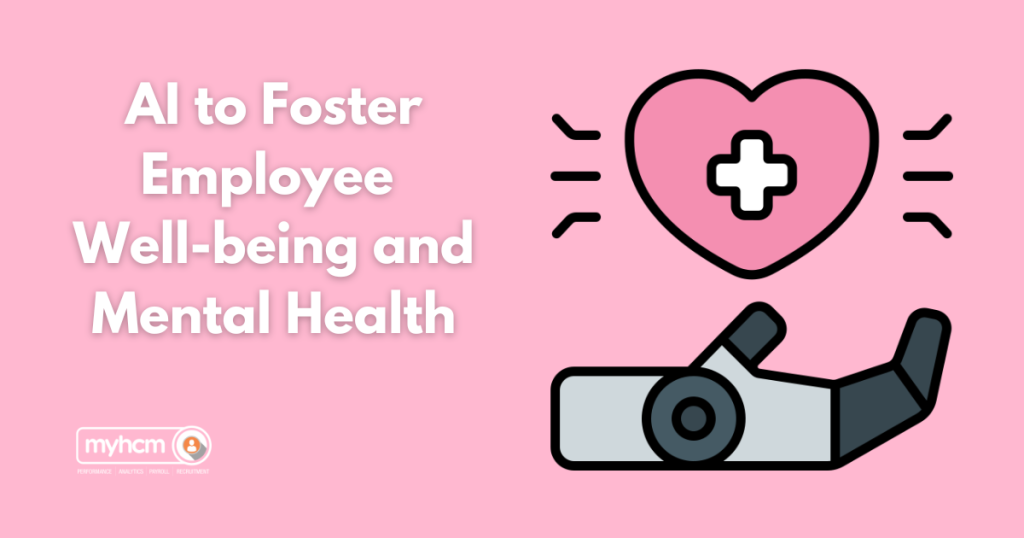Employee wellbeing with AI is critical component of a successful workplace. In today’s fast-paced world, many organizations are looking for innovative ways to support their employees. Using AI to foster employee well-being and mental health has emerged as a powerful solution. AI technologies can provide valuable insights, enhance communication, and promote mental wellness. So, how can organizations leverage AI to improve employee well-being and mental health?
1. Personalized Employee Wellness Programs
One of the most effective way to improve Employee Wellbeing with AI is through personalized wellness programs. AI can analyze individual employee data to tailor wellness initiatives. This can include fitness challenges, mental health resources, and stress management techniques. By providing personalized recommendations, AI fosters employee engagement in well-being programs. Employees are more likely to participate when the resources cater to their unique needs and preferences.
2. Real-Time Employee Wellbeing Monitoring
AI technologies can facilitate real-time monitoring of employee mental health. By using sentiment analysis and natural language processing, AI can assess employee communications and feedback. This allows organizations to identify potential mental health concerns early. If AI detects signs of stress or anxiety, HR can intervene promptly. This proactive approach helps to address issues before they escalate, thereby enhancing overall employee well-being and mental health.
3. Employee Wellbeing with AI
This is another great way to improve Employee Wellbeing with AI by implementing chatbots for immediate mental health support. Chatbots can provide 24/7 assistance to employees seeking guidance. These AI-driven tools can offer resources, coping strategies, and even facilitate connections to mental health professionals. Employees often feel more comfortable discussing their concerns with a chatbot. This anonymity can encourage them to seek help sooner, ultimately improving their mental health.
4. Reducing Stigma Around Mental Health
Using AI to foster employee well-being can also help reduce the stigma surrounding mental health. AI tools can facilitate anonymous surveys and discussions about mental health topics. Organizations can gather valuable insights into employee perceptions and experiences. By promoting open conversations about mental health, companies create a supportive environment. This culture shift encourages employees to prioritize their well-being without fear of judgment.
5. Enhancing Work-Life Balance
AI technologies can play a significant role in enhancing work-life balance, a crucial aspect of employee well-being. For example, AI can analyze workloads and identify patterns that lead to burnout. By providing managers with insights into team dynamics, AI can suggest adjustments to workload distribution. Additionally, AI can automate routine tasks, allowing employees to focus on higher-value work. This balance fosters a healthier work environment, promoting overall mental health.
6. Flexible Work Arrangements
Organizations can effectively use AI to support flexible work arrangements, which in turn contribute to employee well-being. For example, AI-driven tools can analyze productivity patterns, and based on that data, suggest optimal work schedules. Additionally, by offering remote work options and flexible hours, companies empower employees to manage their time more effectively. As a result, this flexibility not only enhances job satisfaction but also supports mental health. Employees who can balance their personal and professional lives are generally more engaged and productive.
7. Data-Driven Insights for HR
Using AI to foster employee well-being also provides HR with valuable data-driven insights. AI tools can analyze employee engagement levels, satisfaction surveys, and performance metrics. This information, therefore, enables HR teams to identify trends and areas for improvement. By understanding the factors affecting employee mental health, organizations can consequently implement targeted initiatives. Additionally, data-driven decision-making enhances the effectiveness of well-being programs and supports continuous improvement.
8. Gamification of Wellness Programs
AI can also enhance employee well-being through gamification of wellness programs. By incorporating game elements, organizations can make wellness initiatives more engaging. AI-driven platforms can track progress, offer rewards, and create friendly competitions among employees. This gamified approach encourages participation and fosters a sense of community. Employees are more likely to engage in well-being activities when they are fun and interactive.
9. Training Managers on Mental Health Awareness
AI can facilitate training programs that focus on mental health awareness for managers. By equipping leaders with the tools to recognize signs of mental health issues, organizations can ultimately create a supportive environment. Moreover, AI-driven training modules can provide scenarios and best practices for handling sensitive situations. Well-trained managers can consequently promote employee well-being by offering support and understanding. This approach, in turn, fosters a culture of care within the organization.
10. Measuring the Impact of Wellbeing Initiatives
Finally, AI can help organizations measure the impact of their employee well-being initiatives. By analyzing engagement scores, productivity levels, and mental health outcomes, companies can consequently evaluate the effectiveness of their programs. This data, therefore, allows organizations to adjust their strategies based on what works best. Additionally, continuous measurement ensures that employee well-being remains a priority, leading to sustained improvements in mental health.
Conclusion
Using AI to foster employee well-being and mental health is not just a trend; rather, it’s a necessity in today’s workplace. By implementing personalized wellness programs, real-time monitoring, and immediate support through chatbots, organizations can consequently create a more supportive environment. Reducing stigma, enhancing work-life balance, and leveraging data-driven insights are therefore essential strategies for improving mental health. As companies continue to embrace AI, the focus on employee well-being will inevitably grow stronger, ultimately leading to a healthier and more productive workforce.
